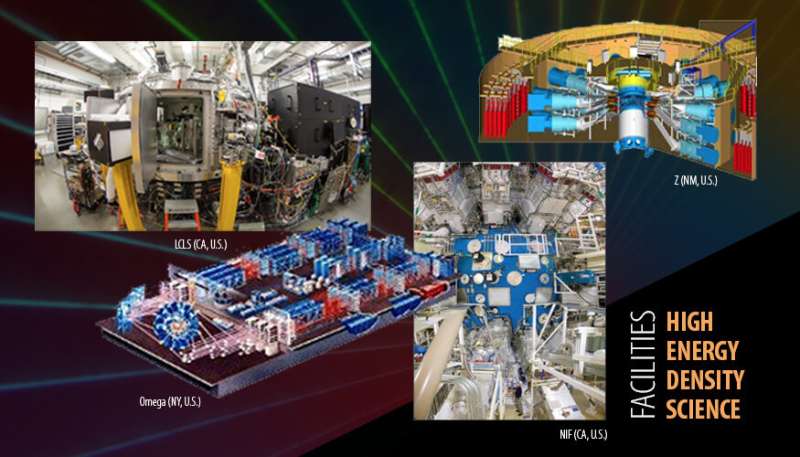Research highlights techniques for studying materials under extreme conditions

The properties of materials under extreme conditions are of key interest to a number of fields, including planetary geophysics, materials science and inertial confinement fusion (ICF). In geophysics, the equation of state of planetary materials such as hydrogen and iron under ultrahigh pressure and density will provide a better understanding of their formation and interior structure.
In a tutorial talk during a virtual meeting of the American Physical Society Division of Plasma Physics in November, Lawrence Livermore National Laboratory (LLNL) physicist Hye-Sook Park discussed the various experimental techniques and key findings of material states under extreme high energy density (HED) conditions based on work conducted at LLNL and other facilities around the world. The HED condition for material studies is defined to be the high pressure condition of greater than 100 gigapascals (GPa) or 1 million times higher than the atmospheric pressure at sea level.
The work presented by Park is now featured in a paper in Physics of Plasmas.
"This paper provides an overview of the high energy density high pressure materials study describing their key diagnostics and the key discoveries," Park said. "This paper is written for those who want to learn the material studies in the HED regime at high level."
Park said the research presented in the paper is important to many areas in geophysics, materials science and stockpile stewardship programs. The research also will continue on all the HED facilities around the world, including next-generation facilities such as high-repetition-rate petawatt systems and new diagnostics such as time resolving X-ray imaging systems that will further advance knowledge of materials at extreme conditions.
The paper reviews the results of five areas including the equation of state of iron, the Earth core material; hydrogen insulator to metal transition that is important to the magnetic field properties in the Jovian planets; phase changes in silicon and diamond at very high pressure; water in the superionic state under high pressure; and lead strength under high pressure.
Understanding extreme conditions
Park explained that the pressure of the Earth's inner core is 350 gigapascals (GPa), or 3.5 million times higher than the atmospheric pressure at sea level. Under such extreme conditions, planetary materials, like hydrogen and silicon and common materials such as lead, can change their density, temperature, atomic lattice structures and strength. For example, studying the equations of state of different planetary materials under ultrahigh pressure and density provides a better understanding of the Earth's formation and interior structure. Scientists in HED physics investigate how the states of matter change under extreme pressures: approximately 100 GPa to 10,000 GPa, or 1 million to 100 million times Earth's atmospheric pressure.
Researchers can create ultrahigh pressures at the HED facilities such as LLNL's National Ignition Facility (NIF), Linac Coherent Light Source (LCLS) at SLAC National Accelerator Laboratory, Omega at the University of Rochester and Z machine at Sandia National Laboratories to conduct material studies under extreme conditions.
"We can create ultrahigh pressures at these facilities to conduct material studies under extreme conditions using lasers ablation drive or magnetic drive," Park said.
The measurements required combining the principles of plasma physics with the advanced diagnostics technology. The plasma physics principles are to create the high-pressure drives to create either shocked or ramped compression.
An example of diagnostics includes the velocity interferometer system for any reflector (VISAR) that measures the sound speed on different thicknesses of sample to measure equation of state, pressure and density relation. Other examples include the dynamic diffraction using quasi-monoenergetic X-ray sources from either the light source or laser-driven X-rays; an ultra-high resolution X-ray spectrometer to understand the atomic oscillations to measure the sample temperature; and high-energy X-ray radiography to perform a face-on radiography on surface perturbation growth to understand the material strength.
Several NIF experiments and LCLS, Omega and Z are described in the paper. NIF's powerful laser system, coupled with exquisite diagnostics, enables scientists to reach unprecedented pressures in the laboratory and produce unexpected/surprising results constraining theories and models that were not possible without experimental results.
More information: Hye-Sook Park et al, Techniques for studying materials under extreme states of high energy density compression, Physics of Plasmas (2021). DOI: 10.1063/5.0046199
Journal information: Physics of Plasmas
Provided by Lawrence Livermore National Laboratory





















